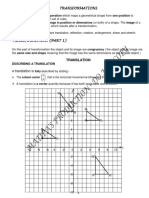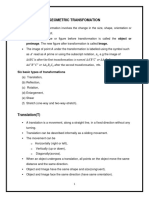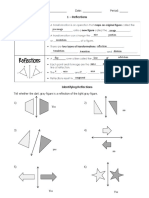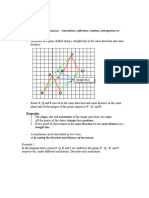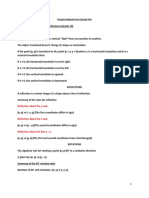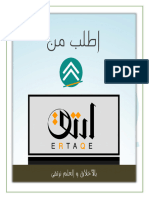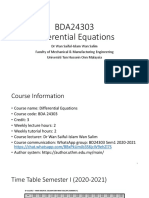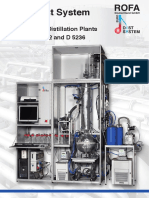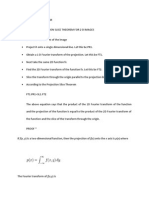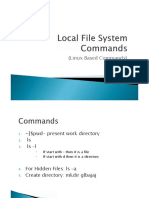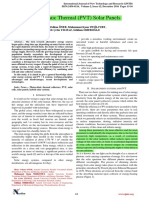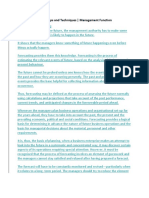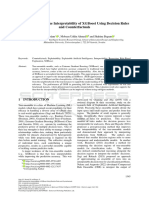0% found this document useful (0 votes)
165 views6 pagesIsometric Transformations Guide
This document discusses different types of transformations that preserve size and shape: translations, rotations, and reflections. Translations slide a figure along a vector, rotations turn a figure about a point, and reflections flip a figure across a line. Isometries like translations, rotations, and reflections produce congruent images that are the same size and shape as the preimage. The document provides examples of applying each type of transformation to polygons by specifying the vertices of the preimage and image.
Uploaded by
Dalia Al-dairyCopyright
© © All Rights Reserved
We take content rights seriously. If you suspect this is your content, claim it here.
Available Formats
Download as PDF, TXT or read online on Scribd
0% found this document useful (0 votes)
165 views6 pagesIsometric Transformations Guide
This document discusses different types of transformations that preserve size and shape: translations, rotations, and reflections. Translations slide a figure along a vector, rotations turn a figure about a point, and reflections flip a figure across a line. Isometries like translations, rotations, and reflections produce congruent images that are the same size and shape as the preimage. The document provides examples of applying each type of transformation to polygons by specifying the vertices of the preimage and image.
Uploaded by
Dalia Al-dairyCopyright
© © All Rights Reserved
We take content rights seriously. If you suspect this is your content, claim it here.
Available Formats
Download as PDF, TXT or read online on Scribd
/ 6








